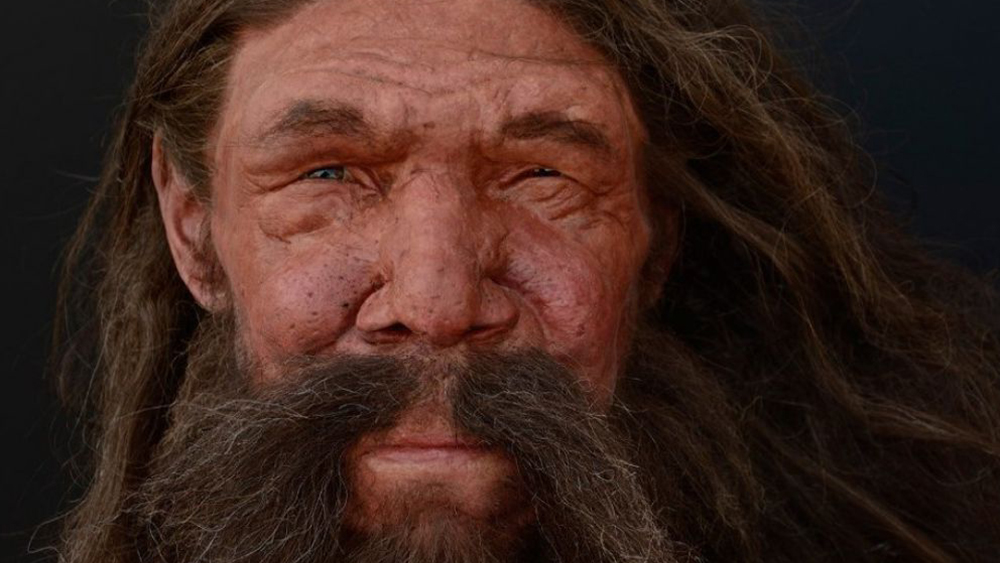A study led by Oxford University researchers was recently published confirming that Neanderthals and humans were very genetically similar and interfertile. They were even closer than polar and brown bears are to each other, which are known to mate and produce viable offspring in the wild quite easily.1 Along with a plethora of previous DNA studies, this research further confirms that Neanderthals were an ancient people group of the human family, descended from Noah’s three sons and their wives after the global Flood.2-4
The analysis of matings between anatomically modern humans and their close archaic relatives, Neanderthals and Denisovans, has been increasingly demonstrated through the analysis of ancient DNA extracted from fossil bones and teeth over the past decade. However, many evolutionists have still claimed that modern humans and their archaic cousins were radically different and that their ability to breed and produce viable offspring was at the far edge of biological compatibility.
In this new study, the researchers developed a genetic distance metric to predict the fertility of the first generation of hybrid offspring between the mating of any two mammalian species. They did this by analyzing genetic sequence from different mammal species that were already known to produce viable hybrid offspring. By correlating genetic distance with offspring fertility, they showed that the greater the genetic distance, the less likely it would be that the offspring would be fertile. Then the researchers effectively used the genetic distance values to determine thresholds of fertility for various mammals.
When the genetic distance between humans, Neanderthals, and Denisovans was calculated, the values were even closer than those found between various animals that are known to readily and easily hybridize in the wild. This includes polar bears mating with brown bears and coyotes mating with wolves. In fact, professor Greger Larson, who is the Director of the Palaeogenomics and Bio-Archaeology Research Network at Oxford University and the senior author of the study said, “Humans and Neanderthals and Denisovans were able to produce live fertile young with ease.”5
These findings confirm that Neanderthals were nothing less than human. Creationists believe that they likely lived shortly after the global Flood since their remains are typically found in ritually buried graves in cave systems—not the global Flood sediments that end at the Neogene-Quaternary (N-Q) boundary at the top of the Cenozoic rock layers.6 And not only is the DNA of Neanderthals identical to modern humans, but the so-called “archaic traits” of a pronounced brow ridge and a sloping forehead can still be found in modern humans living today.7 Once again, the facts of science confirm the scriptures—not the mythical fact-free story of human evolution.
Stage image: Neanderthal reconstruction.
Stage image credit: Kennis & Kennis Reconstructions. Copyright © 2020. Adapted for use in accordance with federal copyright (fair use doctrine) law. Usage by ICR does not imply endorsement of copyright holders.
References
1. Allen, R. et al. 2020. A mitochondrial genetic divergence proxy predicts the reproductive compatibility of mammalian hybrids. Proceedings of the Royal Society. 287 (1928).
2. Tomkins, J. P. DNA Proof That Neandertals Are Just Humans. Creation Science Update. Posted on ICR.org February 21, 2014, accessed June 15, 2020.
3. Tomkins, J. P. Ancient Human DNA: Neandertals and Denisovans. Acts & Facts. 43 (3).
4. Tomkins, J. P. 2020. Neanderthal DNA Muddles Evolutionary Story. Creation Science Update. Posted on ICR.org April 7, 2020, accessed June 15, 2020.
5. Staff Writer. Humans and Neanderthals: less different than polar and brown bears. University of Oxford News and Events. Posted on ox.ac.uk June 3, 2020, accessed June 15, 2020.
6. Clarey, T. L. 2020. Compelling Evidence for an Upper Cenozoic Flood Boundary. Acts & Facts. 49 (5).
7. Tomkins, J. P. 2019. Recent Humans with Archaic Features Upend Evolution. Acts & Facts. 48 (4).
*Dr. Tomkins is Life Sciences Director at the Institute for Creation Research and earned his doctorate in genetics from Clemson University.

Humans and Neanderthals More Similar Than Polar and Brown Bears
The Latest
Puzzling Fossils at an Unlikely Time
Wherever and whenever life is found, it is incredibly complex. This certainly applies to cyanobacterial photosynthetic life that supposedly were some...
CREATION PODCAST
A Theory Designed to Be...Anti-Design | The Creation Podcast:...
Science is objective. At least, that’s what we’re told. But there are inherent issues with this statement that can...
Seeing the Case for Creation in Fruit Flies
Our brain is designed to smoothly and constantly process what we see via the incredibly sensitive photoreceptors (cones and rods) of our eyes.1...
Amazing Defense Systems
Bacteria (prokaryotes) are ubiquitous. A fraction cause disease in people, animals, and plants, but the majority are the foundation for the global food...
Octopus and Fish Plan a Complex Coordinated Hunt
The octopus—an invertebrate—never fails to surprise researchers with its incredible abilities.1,2
The octopus was designed...
A ''40 million year old'' 100% European Gnat
Finding well-preserved creatures in amber1 is a landfall for creation scientists, much like the numerous discoveries of soft dinosaur tissue...
CREATION PODCAST
The Undeniable Power of Narrative | The Creation Podcast: Episode...
Science is objective. At least, that’s what we’re told. But there are inherent issues with this statement that can cause...
Paintbrush of the Creator
Who doesn’t enjoy the amazing color patterns of butterflies?1,2 Such beautiful designs and construction do not reflect blind naturalistic...
November 2024 ICR Wallpaper
"Rejoice always, pray without ceasing, in everything give thanks; for this is the will of God in Christ Jesus for you." (1 Thessalonians 5:16-18 NKJV)
ICR...



















